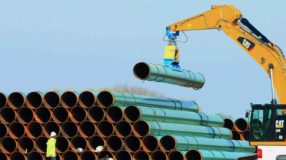WASHINGTON – Natural gas-fired generation is expected to be the key to providing firming generation capability necessary to back up increased renewable electric power generation, a new study, commissioned by the INGAA Foundation and conducted by ICF International, finds.
But to provide this increased natural gas-fired generation to back up intermittent renewable sources of electricity firmly and reliably, improved coordination and considerable investment will be required, the study, Firming Renewable Electric Power Generators: Opportunities and Challenges for Natural Gas Pipelines, concludes.
“This is the first study to drill down deeply into what will be required to firm up the widespread deployment of intermittent renewables and the implications this will have for gas supply, infrastructure and transportation services,” noted INGAA Foundation President Don Santa. “This study also highlights a number of issues that policy makers need to consider and address if intermittent renewable generation is to become a reliable portion of the power supply.”
Almost 5 Bcf per day of incremental delivery capability, at a cost of between $2 billion and $15 billion, could be needed over the next 15 years if new or existing gas-fired generation with firm natural gas supply is required as back-up generation, the study finds. Even though the utilization rate for the new gas pipeline infrastructure will be around 15% or less, firm transportation is necessary to ensure that generators receive gas when needed, which is mandatory for a reliable electric grid. Despite higher costs associated with the reduced utilization rate, natural gas still is expected to be the least costly option for firming renewable generation.
Click here for the executive summary and full study.







